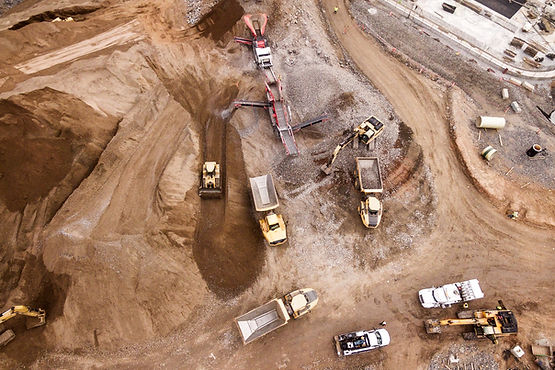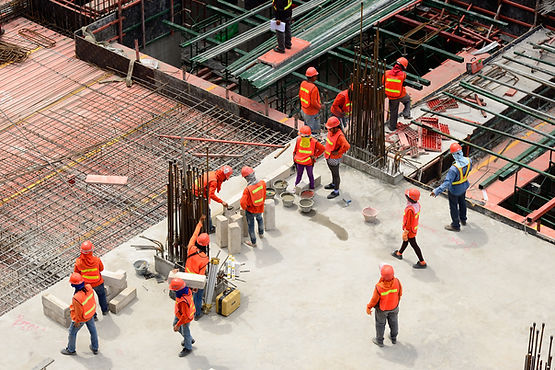In the construction world, choosing the right type of slab is essential to ensure the stability and durability of a building. Among the various options available, the full slab stands out for its high strength and versatility, making it an ideal choice for structures that require high load-bearing capacity.
Unlike other types of slabs, such as the ribbed slab, the full slab is a solid concrete structure that offers uniform weight distribution and greater acoustic and thermal insulation. This makes it particularly useful in residential, commercial and industrial buildings.
When is a Full Slab Used?
The full slab is an excellent option in projects where a solid, resistant structure with good load-bearing capacity is required. Its use is preferable in situations where vibrations are to be minimized, acoustic insulation is to be improved and durability is to be guaranteed.
Applications in different types of construction
-
Residential construction: It is common in multilevel housing where a resistant and uniform base is required. In addition, its thermal and acoustic insulation capacity makes it ideal for comfortable homes.
-
Commercial construction: It is used in shopping malls, offices and corporate buildings that require structures of great strength and stability.
-
Industrial construction: Its use is essential in factories, warehouses and industrial buildings, since it withstands heavy loads and offers a longer service life.
Importance in Structural Design
In the structural design of housing, the full slab guarantees a uniform distribution of loads, avoiding problems of differential settlement and reducing the need for long-term maintenance. In buildings, it allows the design of more robust and safe structures, ensuring their stability in the face of external forces such as earthquakes and wind.
Recommendations for Use
When choosing a full slab for a construction project, it is important to consider its characteristics and evaluate if it is the best option according to structural needs. Its use is highly recommended in buildings that require superior resistance and good performance in thermal and acoustic insulation.
Advantages of Full Slab
-
High structural resistance and load capacity: Thanks to its massive design, it supports heavy weights and distributes loads uniformly, which makes it ideal for multi-story buildings or structures subjected to high stresses.
-
Greater thermal and acoustic insulation: Unlike other types of slabs, its solid concrete composition reduces noise transmission and maintains more stable temperatures inside the building.
-
Benefits in terms of concrete structures: Its compatibility with different construction methods and its capacity to resist heavy loads make it an ideal solution for large-scale projects.
Full Slab Installation Process
to ensure its strength and durability. The main stages of the process are described below.
Design and Drawing of Plans
A correct structural design of buildings is fundamental to guarantee the safety and stability of the slab. At this stage, engineers calculate the loads to be supported by the structure and determine the necessary reinforcements to optimize its performance.
Also, the creation and review of construction details is essential to avoid errors during the execution of the project. This includes specifying the type of concrete, steel reinforcement and installation methods to be used.
Preparation and Formwork
For the construction of a full slab, it is necessary to have adequate materials for the formwork and supporting structure, such as wood, metal or reusable modular systems.
It is crucial to verify the stability and levelness of the slab before proceeding with the concrete pour. A poorly installed formwork can generate deformations that affect the structural quality of the slab.
Reinforcement Placement and Concrete Pouring
The type of steel used in the structural reinforcement will depend on the load the slab must support. Generally, electrowelded mesh or corrugated steel rods are used to improve the flexural strength.
The concrete should be poured in uniform layers to avoid the formation of air bubbles. The recommended setting time varies according to the type of mix used and climatic conditions. In addition, this process should follow the specifications established in the structural drawings to ensure proper execution.
Curing and Finishing
Curing concrete is a critical step in preventing premature cracking and ensuring its strength. Methods such as water curing, curing membranes or sealing compounds can be used.
To improve the durability of the slab, it is advisable to apply finishes such as surface hardeners, sealers or coatings that protect against moisture and wear.
Additional Considerations
Interaction with Other Building Elements
The full slab must be properly integrated with other structural elements to ensure the stability and safety of the building.
-
Compatibility with different types of foundations: Depending on the soil and the load that the structure will support, the full slab can be combined with shallow foundations (footings, foundation slabs) or deep foundations (piles, piles). It is essential to carry out a preliminary soil study to determine the best solution.
-
Possibility of combination with steel structures: In some projects, the full slab is combined with structural steel frames to optimize load distribution and improve seismic resistance. This mixed system is common in high-rise buildings and industrial infrastructures.
Environmental and Regional Factors
Climatic and geographic conditions directly influence the choice of materials and construction techniques.
-
Relevance of structural analysis in Sonora: In high temperature zones such as Sonora, it is crucial to consider the thermal expansion of concrete and its impact on the filled slab. A proper analysis allows the selection of admixtures and curing methods that minimize cracks and deformations.
-
Adaptations according to climatic conditions and local regulations: In regions with frequent earthquakes or high humidity, specific regulations must be followed to reinforce the slab and guarantee its durability.
Types of Structures Analyzed
The full slab is a highly resistant and durable structural solution, ideal for projects that require stability and load-bearing capacity. Among its main advantages are its robustness, thermal and acoustic insulation, as well as its compatibility with various construction techniques. However, its greater weight and cost can represent a challenge compared to lighter systems.
Contact us for more information:
Address: Av. 4, 165, Prados del Sol, Hermosillo, Sonora, Mexico.
WhatsApp: Call us or send us a message to +52 662 123 4567
LinkedIn: Follow our LinkedIn page to learn more about our projects and news.
For its correct application in construction projects, it is advisable to perform a detailed analysis of the soil conditions, climate and structural requirements. Having the advice of structural engineering experts is key to guarantee a safe and efficient design.
Our Portfolio
Featured Projects
Discover some of the most iconic projects we have collaborated on, demonstrating our ability to face challenges and exceed expectations.

















.png)








.png)